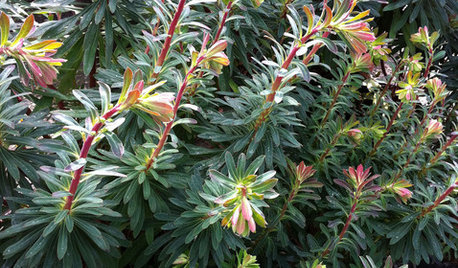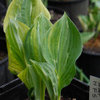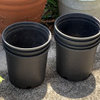A Foliar Nematode Experiment
bernergarden
14 years ago
Related Stories

GARDENING GUIDESGreat Design Plant: Euphorbia
The daring colors and low water needs of this tropical plant make it a favorite for injecting life into tired landscapes year-round
Full Story
EDIBLE GARDENSSummer Crops: How to Grow Squash
Almost foolproof and with cheerful flowers, squash comes in a wide range of varieties to plant in spring
Full Story
GARDENING GUIDESGarden Myths to Debunk as You Dig This Fall and Rest Over Winter
Termites hate wood mulch, don’t amend soil for trees, avoid gravel in planters — and more nuggets of garden wisdom
Full Story
LIFEHow to Outsmart Backyard Critters
Learn to think like a raccoon, skunk or squirrel to keep your home safe and your garden intact
Full Story
EDIBLE GARDENSSummer Crops: How to Grow Tomatoes
Plant tomato seedlings in spring for one of the best tastes of summer, fresh from your backyard
Full Story
GARDENING GUIDESGet on a Composting Kick (Hello, Free Fertilizer!)
Quit shelling out for pricey substitutes that aren’t even as good. Here’s how to give your soil the best while lightening your trash load
Full Story
INSPIRING GARDENSNative Plants Bring 10 Southern California Front-Yard Gardens to Life
Rare plants, rain gardens and wildlife habitats are just a few of the features showcased on the 2016 Theodore Payne Native Plant Garden Tour
Full Story
GARDENING GUIDESHow to Switch to an Organic Landscape Plan
Ditch the chemicals for a naturally beautiful lawn and garden, using living fertilizers and other nontoxic treatments
Full Story
FARM YOUR YARDHow to Get Good Soil for Your Edible Garden
The nutrients in your soil feed the plants that feed you. Here are tips on getting it right — just in time for planting season
Full Story
GARDENING GUIDESInvite Mining Bees to Your Garden by Planting Their Favorite Plants
Look for mining bees (Andrena) pollinating woodland wildflowers in U.S. gardens this spring
Full StoryMore Discussions








Janice
Pieter zone 7/8 B.C.
Related Professionals
Grand Haven Landscape Architects & Landscape Designers · Deerfield Landscape Contractors · New Berlin Landscape Contractors · Roseville Landscape Contractors · Saint Paul Landscape Contractors · Candler-McAfee Fence Contractors · Citrus Heights Fence Contractors · Hopkins Fence Contractors · Pensacola Fence Contractors · Ponte Vedra Beach Fence Contractors · San Pedro Fence Contractors · Wilmette Fence Contractors · Cocoa Beach Solar Energy Systems · Yucca Valley Solar Energy Systems · Homer Glen Solar Energy SystemsJanice
just1morehosta
woodthrush
chris-e
bernergardenOriginal Author
brucebanyaihsta
chris-e
chris-e
sassy7142
chris-e
in ny zone5
Pieter zone 7/8 B.C.
in ny zone5
tracyvine
sassy7142
tracyvine
in ny zone5
Pieter zone 7/8 B.C.
mctavish6
in ny zone5
thisismelissa
thisismelissa
daniss